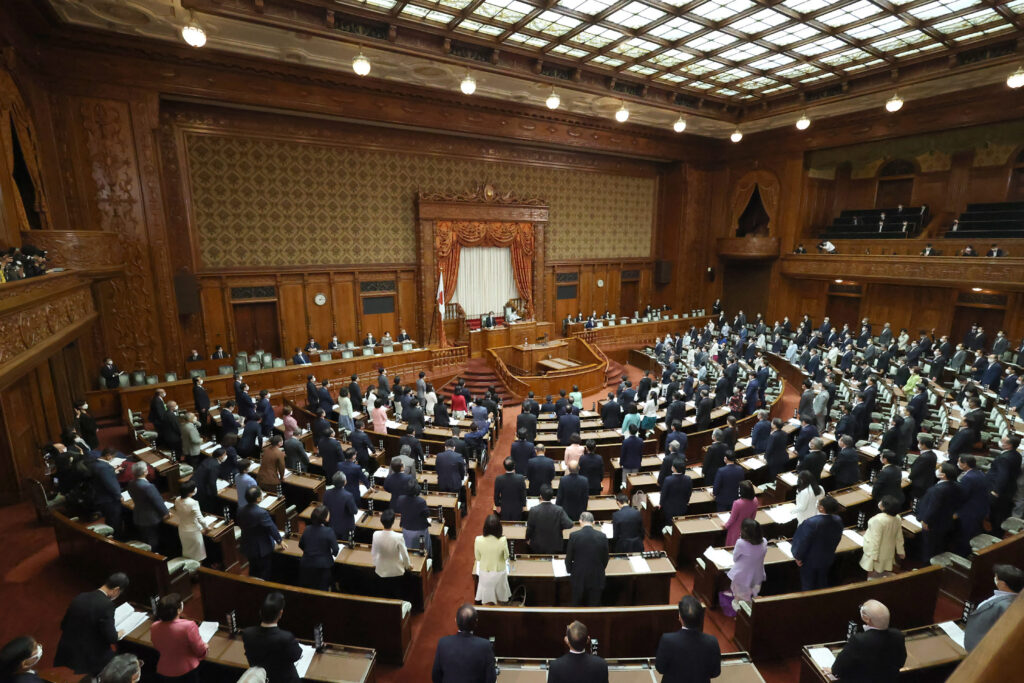
- ARAB NEWS
- 01 Aug 2025

TOKYO: A total of 185 people are preparing to run in next summer’s election for the House of Councillors, the upper chamber of the Diet, according to a Jiji Press survey as of Saturday.
Prime Minister ISHIBA Shigeru is apparently hoping that the Liberal Democratic Party-Komeito ruling coalition will maintain its majority in the Upper House, while the main opposition Constitutional Democratic Party of Japan and others will try to force the ruling bloc into a minority, as in the House of Representatives, the lower chamber.
How much opposition parties can unify their candidates in single-seat constituencies is expected to determine the overall outcome of the election.
With next year’s ordinary Diet session slated to begin on Jan. 24, the Upper House election is likely to be held on July 20, with the official campaign period beginning on July 3, if the session is not extended.
The Upper House has 248 seats, half of which are up for election every three years. The upcoming election will also include a by-election for a seat in the Tokyo constituency, so a total of 125 seats will be contested.
The LDP-Komeito coalition currently holds 142 seats, 67 of which are up for grabs in the upcoming election, including one seat held by a lawmaker who left the LDP over his involvement in the party’s political funds scandal.
If the coalition loses 18 or more seats, it would become a minority in the Upper House. It lost its majority in the Lower House in October’s general election.
In the LDP, 43 people are preparing candidacies for constituency seats, and 24 people for proportional representation seats. The party is also rushing to select candidates in five single-seat constituencies–Nagano, Wakayama, Tokushima-Kochi, Ehime, and Okinawa.
Komeito, whose ability to attract votes is in decline, aims to maintain its seven constituency seats and win six proportional representation seats. It has almost finished selecting candidates.
Former Komeito chief YAMAGUCHI Natsuo, who has said he will not run in the Tokyo constituency, has not clarified whether he will run as a proportional representation candidate.
As multiple-seat constituencies often result in the ruling and opposition sides splitting seats, the main focus of the election is the 32 single-seat districts.
The CDP is seeking to turn these constituencies into a one-on-one battle with the LDP and attract voters critical of the LDP-led government. It hopes to cooperate with fellow opposition parties Nippon Ishin no Kai (Japan Innovation Party) and the Democratic Party for the People, while coordinating candidates with the Japanese Communist Party.
However, the CDP has been slow to select candidates, having picked only 18 people for constituency seats and 10 for proportional representation seats so far. It has yet to select candidates in about 20 single-seat districts.
Nippon Ishin is targeting at least six seats in the upcoming race and planning to field three candidates for constituency seats and nine for proportional representation seats.
The DPFP has selected three candidates each for constituency and proportional representation seats. It aims to expand its presence in urban areas.
The JCP plans to field 14 candidates for constituency seats, including four in single-seat districts, and five for proportional representation seats.
Reiwa Shinsengumi’s two incumbent Upper House members, both of whom are severely disabled, will have their seats contested. The Social Democratic Party has selected two candidates for proportional representation seats, while Sanseito has picked 25 people for constituency seats.
The Conservative Party of Japan has not selected candidates.
JIJI Press